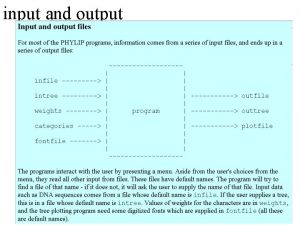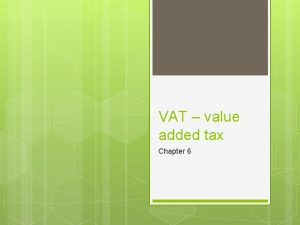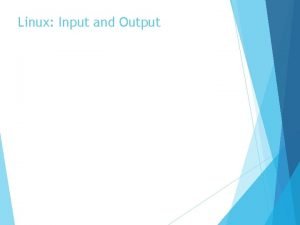input and output Whats in PHYLIP Programs in






- Slides: 6

input and output

What’s in PHYLIP Programs in PHYLIP allow to do parsimony, distance matrix, and likelihood methods, including bootstrapping and consensus trees. Data types that can be handled include molecular sequences, gene frequencies, restriction sites and fragments, distance matrices, and discrete characters. Phylip works well with protein and nucleotide sequences Many other programs mimic the style of PHYLIP programs. (e. g. TREEPUZZLE, phyml, protml) Many other packages use PHYIP programs in their inner workings (e. g. , PHYLO_WIN) PHYLIP runs under all operating systems Web interfaces are available

Programs in PHYLIP are Modular For example: PROTDIST takes a aligned sequences (one or many sets) and calculates distance matices (one or many) FITCH (or NEIGHBOR) calculate best fitting or neighbor joining trees from one or many distance matrices …. modules are available to draw trees as well, but often people use treeview or njplot

The Phylip Manual is an excellent source of information. Brief one line descriptions of the programs are here The easiest way to run PHYLIP programs is via a command line menu (similar to clustalw). The program is invoked through clicking on an icon, or by typing the program name at the command line. > protdist > neighbor If there is no file called infile the program responds with: [gogarten@carrot gogarten]$ seqboot: can't find input file "infile" Please enter a new file name>

program folder

menu interface











